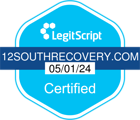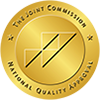
Are you aware of the ramifications of Molly usage and its impact on urine tests? Molly, scientifically known as MDMA, is a synthetic substance celebrated for its euphoric effects. In this comprehensive guide, we delve into the intricacies of Molly’s presence in your system and its implications for drug testing. Whether you’re preparing for a drug test or contemplating seeking professional addiction treatment in Lake Forest, understanding this information is vital. Join us at 12 South Recovery as we navigate this complex terrain and equip you with the knowledge needed to make informed decisions. If you’re ready to take control of your journey towards recovery, contact us at 866-311-4524 to explore your options.
Understanding Molly and Its Metabolism
Molly, known scientifically as MDMA (3,4-methylenedioxy-methamphetamine), is a synthetic drug renowned for its euphoric and empathogenic effects. Upon ingestion, it swiftly undergoes metabolism within the body, leading to the production of various metabolites. These metabolites, including 4-hydroxy-3-methoxymethamphetamine (HMMA) and 4-hydroxy-3-methoxyamphetamine (HMA), are excreted primarily through urine, along with a smaller portion eliminated via feces and sweat glands.
Factors Influencing Detection Time
Numerous factors influence the duration of Molly’s presence in urine:
- Dosage: The amount of Molly consumed significantly impacts its detection window. Higher doses typically result in prolonged detection times.
- Frequency of Use: Chronic and heavy users may exhibit extended detection windows due to cumulative metabolite buildup.
- Individual Metabolism: Variations in metabolic rates among individuals can influence the pace at which Molly and its metabolites are processed and eliminated.
- Hydration Levels: Adequate hydration promotes the efficient elimination of toxins, potentially shortening detection times.
- Body Mass Index (BMI): Individuals with higher BMI may retain traces of Molly in their system for longer durations.
Detection Methods and Timeframes
Urine Tests
Urine analysis is the most commonly employed method for detecting Molly usage. While the detection window can vary depending on several factors, including those mentioned above, Molly can typically be detected in urine for:
- Casual users: 1-3 days post-consumption
- Moderate users: 3-5 days post-consumption
- Heavy users: Up to 7 days or longer post-consumption
Blood Tests
Blood tests are another modality utilized to detect recent Molly usage. However, due to the rapid metabolism and elimination of MDMA, the detection window is relatively brief, generally spanning:
- Casual users: Up to 24 hours post-consumption
- Moderate to heavy users: Up to 48 hours post-consumption
Hair Tests
Hair follicle testing offers an extended detection window compared to urine and blood tests. Traces of Molly and its metabolites can be discernible in hair samples for up to:
- Casual to chronic users: Approximately 90 days post-consumption
Seeking Comprehensive Addiction Treatment in Lake Forest
While understanding the pharmacokinetics of Molly and its detectability is crucial, addressing underlying addiction issues is paramount for sustainable recovery. At 12 South Recovery in Lake Forest, we offer a comprehensive array of evidence-based treatment modalities tailored to meet each individual’s unique needs.
Our Treatment Approach
- Assessment and Evaluation: Upon admission, clients undergo thorough assessments to determine their specific needs, challenges, and goals.
- Medically Supervised Detoxification: For individuals grappling with Molly addiction, our medical team provides compassionate care and support throughout the detox process.
- Individualized Treatment Plans: Drawing upon a diverse range of therapeutic modalities, including cognitive-behavioral therapy (CBT), dialectical behavior therapy (DBT), and holistic approaches, we tailor treatment plans to address the multifaceted nature of addiction.
- Dual Diagnosis Treatment: Recognizing the interplay between substance use disorders and co-occurring mental health conditions, we offer integrated treatment approaches to address both aspects simultaneously.
- Aftercare and Continued Support: Our commitment to our clients extends beyond the completion of residential treatment, with robust aftercare planning and ongoing support to facilitate sustained sobriety and holistic well-being.
Why Choose 12 South Recovery?
- Experienced and Compassionate Staff: Our team comprises seasoned professionals dedicated to providing unparalleled care and support.
- Client-Centered Approach: We prioritize the unique needs and preferences of each individual, fostering a supportive and empowering treatment environment.
- Holistic Healing: In addition to traditional therapeutic modalities, we offer holistic interventions such as yoga, meditation, and nutritional counseling to promote holistic well-being.
- Family Involvement: We recognize the vital role of family support in the recovery process and encourage active involvement in our clients’ treatment journeys.
- Community Integration: Through engagement in community-based activities and peer support groups, we facilitate social connection and reintegration into healthy, fulfilling lifestyles.
Reach Out to Us Today!
Embark on your journey to recovery today. Contact 12 South Recovery at 866-311-4524 to take the first step towards reclaiming your life from Molly addiction. Our compassionate team is here to support you every step of the way.
FAQs
Yes, Molly possesses addictive properties and can lead to psychological dependence with prolonged use.
Attempting to detox from Molly without medical supervision can be risky and potentially dangerous. Professional treatment offers the safest and most effective path to recovery.
Signs may include increased tolerance, withdrawal symptoms (e.g., depression, fatigue), neglecting responsibilities, and strained relationships.
Molly and its metabolites can typically be detected in hair follicles for up to 90 days post-consumption.
Treatment options may encompass a combination of therapy (individual, group, family), medication-assisted treatment (MAT), support groups (e.g., 12-step programs), and holistic therapies (e.g., mindfulness practices, art therapy).


















